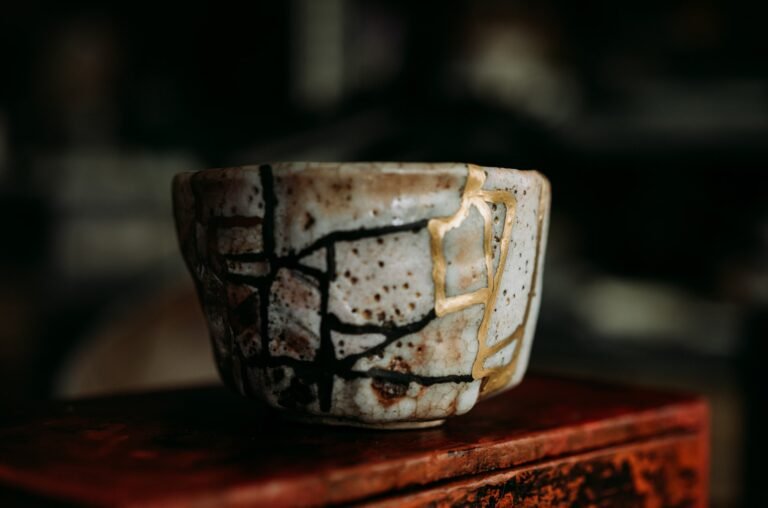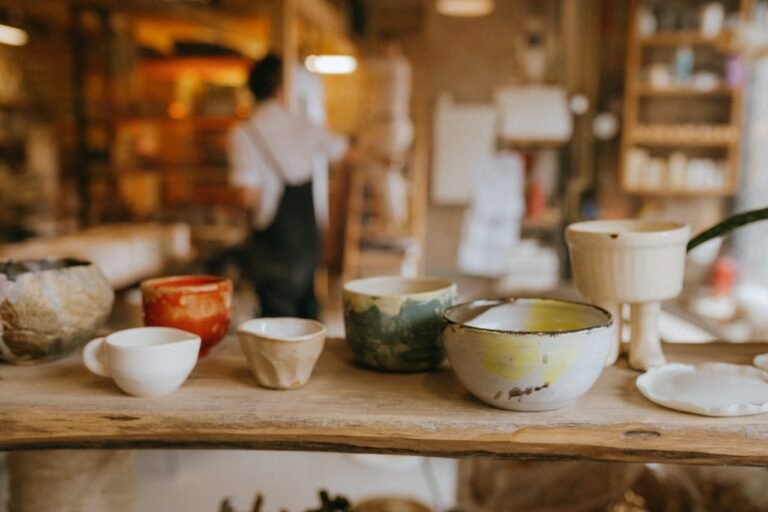How Do I Glaze My Pottery in the Oven? Explained!
If you are an average consumer of kitchen utensils, appliances, or textiles, you certainly know about the advantages and disadvantages of cooking and preparing food in dishes made of different types of materials. Metal or granite have their advantages as they are the most durable, newer generations have to adapt to the type of device on which food is prepared, so they must match induction hobs, with the possibility of washing in the dishwasher and the opportunity to reheat your dish in the microwave. If you are still someone who wants to make clay dishes at home, this text can offer you the answer to the question of how to glaze my dishes in the oven?
The glazing process itself in this context means “glazing” your dishes, for example giving objects made of earth, leather, or wood a final shine. This way, you get dishes that can last longer because of the protective layer you added, with a guarantee that the pots will be tasty and healthy, since nothing can leak out of the dishes, and at the same time you keep all the healthy ingredients in the meal since neither the vessel does not absorb into its walls.
In addition to the answers about the process of making clay dishes, we will offer you answers to questions related to the type of material, how to carry out the process itself and how you can use these dishes in the preparation of meals every day.
It Would Be Better if We Started from the Beginning
If you did not read the texts on this blog before, you need to know a few things:
- What exactly are you dealing with?
- What is clay and what types of clay are there?
- Is clay easy or difficult to glaze?
- Is it possible to glaze at home at all, in the oven that you use every day?
If you use clay pots, be sure to make the right choice, as these dishes are the healthiest choice for preparing the food your family will eat. In addition to having a certain amount of elasticity, they retain all the nutrients, so the dishes are cooked in their own juice, which is why very little salt and fat are needed for topping up.
In order to get to know each other better, ceramics is a non-metallic solid, which we make from the surface layer of earth, or clay, whose melting point is at 2000 degrees Celsius. You should do your best to overheat the ceramic pots. Along with clay and powder materials, water serves to achieve the elasticity of the vessel and shape it into the desired shape. Once you shape the ceramic pots, they are baked at high temperatures in an oven we call a “kiln”.
If you want to add a little vitality to your ceramic pots or leave a personal stamp on them, you can decorate them with waterproof paints, which are also called “glazing”.
How to Glaze Pottery Without a Kiln?
First of all, we need to introduce you to the term “kiln”: they were invented to contain heat to reach a higher temperature with less fuel. This is needed because heat removes the molecular water in the clay. That way, molecules of clay convert to those which do not dissolve or slake in water.
Throughout history, kilns were used as an outdoor bonfire type of firing, which was fueled with enough wood so it can exceed red glowing heat during the burn. Temperatures are between 1000F and hotter. That way, your pottery is safe to use, without breaking and risking ruining your meals.
But, not everything is so great, since the administration of the new generation does not allow lighting fires in open areas. Open flames are prohibited in places other than those intended for that purpose.
An alternative solution instead of a kiln may be that if you find such a place or workshop, do so with extreme caution with safety measures taken.
Since many cities and communities are very strict about open fires, consider safety and local fire codes. Do not do it anywhere where there is any chance that the fire will spread from your firing. A bucket of water or an ample supply of water is a must close at hand. You will also need a shovel and dirt that can quickly be used to put out an accidental fire. Strict safety habits are mandatory when working with an open flame, so if you are in an opportunity, teach your students and children about it. Don’t leave an open fire unattended, as the temperatures are much hotter than a cooking fire.

Can You Fire Ceramics in an Oven?
In order to offer you an answer to this question, we need to write a few reasons to better understand the process of firing clay.
For the clay to be sintered, very high temperatures are needed, which go up to 1300C. Sintering is a process during which evaporation occurs, both surface and constitutional water from the clay, and its particles are maximally compressed in this way. The ceramic that you bake in this way then gets its full strength and loses porosity. This is the main reason why you cannot achieve the same effect in your home oven at temperatures up to 250C, which are mostly achieved by ovens – nothing would happen.
- In the divisions of clay types, you can find information that some of them are sintered at “lower temperatures”.
- These temperatures are still far higher than those achieved by your household oven, as temperatures are between 1050 and 1100C, after which they enter the melting phase, and clays baked at “high temperatures” reach their hardness at baking temperatures above 1240C.
- The clay goes through different stages of firing. The first baking, after the object is made and dried, is called “biscuit” and the temperature, in that case, is between 950 and 990C. Then you can paint the object and put it on glazed baking which can be at “low temperature” up to 1100C or at “high temperature” around 1240C.
- In exceptional cases, you can put the item you want to bake on “mono” baking (in one round) to avoid “biscuits” (baking layers), but it is not recommended.
- In addition to the basic processes, if you want to add gold, platinum, or glaze, the clay pots go to the third firing, which means a lower temperature of about 820C.
All this speaks in favor of the fact that your home oven is not conditional for baking clay, but serious kilns are needed, with good insulation and a programmer for controlled temperature rise.
How Much Does a Pottery Kiln cost?
Depending on the country from which you order, the price range of kilos varies. This primarily depends on the market of the manufacturer it supplies to different countries, as well as whether they offer support for the installation and service of the ovens they sell.
According to the available information, we can find a kiln between $ 300 and $ 1500, depending on the power and temperature that the oven reaches.
We must especially mention that there is a belief that kilns are difficult to maintain, since they draw a lot of electricity, but if your decision is to bake clay pots, we are sure that you have included all the costs for a successful business. If you need more tips on working with clay or inspiration for making clay pots, you can consult other texts on our blog.







